| کد مقاله | کد نشریه | سال انتشار | مقاله انگلیسی | نسخه تمام متن |
|---|---|---|---|---|
| 4269816 | 1610860 | 2014 | 13 صفحه PDF | دانلود رایگان |
IntroductionEstrogen receptor (ER) α is critical in mediating the harmful effects of hyperestrogenism in fetal or neonatal life on the developing penis. In contrast, little is known on the impact of an excess of estrogens on penile function in adulthood.AimTo investigate the effect of estrogens on metabolic syndrome (MetS)‐associated erectile dysfunction (ED).MethodsWe employed a recently established animal model of high fat diet (HFD)‐induced MetS. Subgroups of MetS rabbits were dosed with either testosterone (T) or tamoxifen. We evaluated penile responsiveness to acetylcholine (Ach) as well as the expression of genes related to penile smooth muscle relaxation and contractility.Main Outcome MeasureAssociations between MetS‐induced penile alterations and sex steroids were investigated in an animal model of HFD‐induced MetS. To understand the role of either androgen deficiency or estrogen excess on ED, we treated subgroups of MetS rabbits with either T or tamoxifen, a classical ER antagonist.ResultsFeeding an HFD‐induced MetS was associated to elevated estradiol (E2) and low T levels. E2, but not T, was independently and negatively associated with genes able to affect penile erection. Smooth muscle‐related markers decreased as a function of E2 and were positively associated with all the variables investigated. Increasing concentrations of circulating E2 were negatively associated with Ach‐induced relaxation. In HFD rabbits, in vivo T dosing significantly improved MetS and completely normalized circulating E2. Conversely, in vivo tamoxifen dosing reduced visceral adiposity and partially restored T level. Ach‐induced relaxation was severely impaired by HFD and significantly restored, up to the control level, by both tamoxifen and T dosing. In rabbit smooth muscle cells cultures 17β‐E2 (1 nM) significantly reduced the expression of α‐smooth muscle actin, transgelin, and phosphodiesterase type 5. The effects of 17β‐E2 were completely reverted by tamoxifen (100 nM).ConclusionsThis study demonstrates, for the first time, that HFD‐induced ED is more associated with a high E2, rather than to a low T, milieu. HFD‐induced ED is partially restored by in vivo treatment not only with T but also with the nonsteroidal ER antagonist, tamoxifen. Vignozzi L, Filippi S, Comeglio P, Cellai I, Morelli A, Marchetta M, and Maggi M. Estrogen mediates metabolic syndrome‐induced erectile dysfunction: A study in the rabbit. J Sex Med 2014;11:2890–2902.
Journal: The Journal of Sexual Medicine - Volume 11, Issue 12, December 2014, Pages 2890–2902
